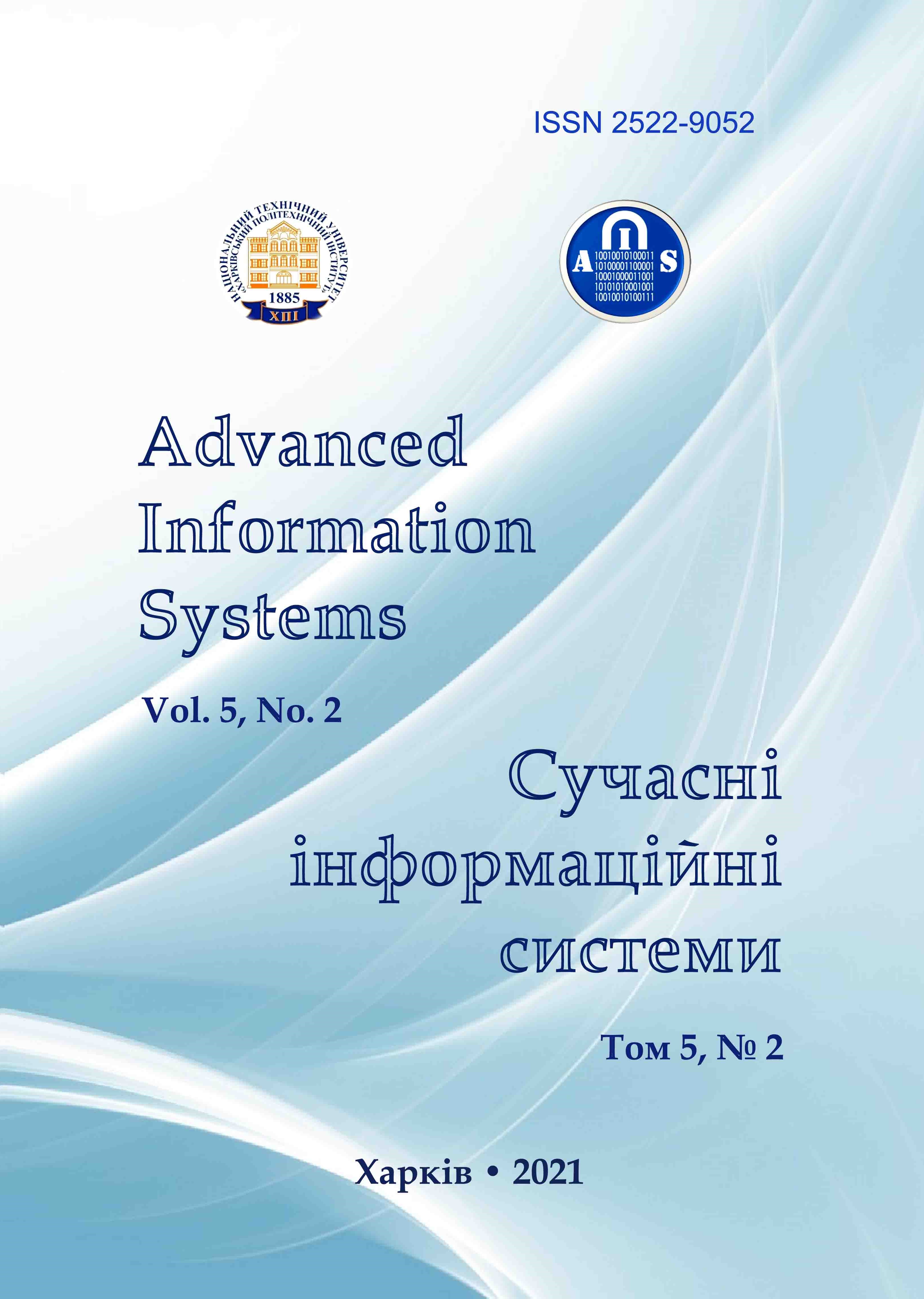Determining the capacity of the self-healing network segment
Main Article Content
Abstract
An approach to determining the bandwidth of the self-healing segment of the data network is proposed. The subject of the study are autonomous segments of the telecommunications network, which have the property of self-healing. The object of research is the process of information transfer between nodes of an autonomous segment. The scientific novelty is to improve the method of determining the capacity of the self-healing segment of the telecommunications network with limited network resources by applying the criterion of ensuring the minimum time of information delivery at a given limit of possible probability of loss. The following tasks were solved: a mathematical model of the self-healing segment of the telecommunication network in the form of a queuing system was developed; the proposed method of calculating the degree of channel congestion. Conclusion: the proposed approach made it possible to calculate the bandwidth of the communication channels of the self-healing segment of the telecommunications network and the required amount of buffer memory with a known network topology and a given gravity matrix, providing the required values of failure probability and guarantee minimum message delivery time.
Article Details
References
Shefer, О.V. and Alnaeri, Frhat Ali (2020), “Optimum flow distribution in the network with adaptive data transfer”, Electronics and Control Systems, No. 4(66), pp.45-50, DOI: https://doi.org/10.18372/1990-5548.66.15254.
Fang, Shuguang, Dong, Yuning and Shi, Haixian (2012), “Approximate Modeling of Wireless Channel Based on Service Process Burstiness”, Proceedings of the International Conference on Wireless Networks (ICWN); Athens: 1-7. Athens: The Steering Committee of The World Congress in Computer Science, Computer Engineering and Applied Computing, (WorldComp).
Sobieraj, M., Stasiak, M. and Weissenberg, J. (2012), “Analytical model of the single threshold mechanism with hysteresis for multi-service networks”, IEICE Transactions on Communications, Vol. E95.B No. 1, pp. 120–132.
Kuchuk, G., Kovalenko, A., Komari, I.E., Svyrydov, A. and Kharchenko, V. (2019), “Improving Big Data Centers Energy Efficiency: Traffic Based Model and Method”, In: Kharchenko V., Kondratenko Y., Kacprzyk J. (eds) Green IT Engineering: Social, Business and Industrial Applications. Studies in Systems, Decision and Control, vol 171. Springer, Cham, DOI: https://doi.org/10.1007/978-3-030-00253-4_8.
Kurose, J. and Ross, K. (2017), Computer networking: a top–down approach, 7th ed., Harlow: Pearson, 864 p.
Ruban, I.V., Martovytskyi, V.O., Kovalenko, A.A. and Lukova-Chuiko, N.V. (2019), “Identification in Informative Systems on the Basis of Users' Behaviour”, Proceedings of the International Conference on Advanced Optoelectronics and Lasers, CAOL 2019-September, 9019446, pp. 574-577, DOI: https://doi.org/10.1109/CAOL46282.2019.9019446.
Chen, Y.G. and Feng, J. (2012). “Fractal-based exponential distribution of urban density and self-affine fractal forms of cities”, Chaos, Solitons & Fractals, 45(11): 1404-1416.
Kuchuk, N., Mozhaiev, O., Mozhaiev, M. and Kuchuk, H. (2017), “Method for calculating of R-learning traffic peakedness”, 2017 4th International Scientific-Practical Conference Problems of Infocommunications Science and Technology, PIC S and T 2017 – Proceedings, pp. 359-362, DOI: https://doi.org/10.1109/INFOCOMMST.2017.8246416.
Vapnik, V. (1987), Estimation of Dependences based on Empirical Data, Springer-Verlag, N.-Y., Berlin, 326 p.
